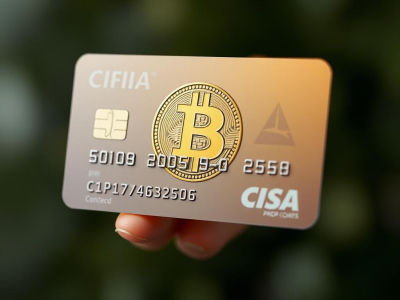
Integrating decentralized finance (DeFi) with traditional payment systems through CryptoCards presents a pragmatic solution for modern financial transactions. By harnessing the capabilities of blockchain technology, these cards enable seamless payments while ensuring enhanced security and transparency.
The rise of digital currencies has transformed how we perceive finance. CryptoCards facilitate instantaneous transactions, bridging the gap between crypto assets and fiat currencies. This innovation allows users to make payments across various platforms without sacrificing security or speed.
Embracing this integration means adapting to a future where digital payments are not only commonplace but also secure. With the growing adoption of DeFi, leveraging CryptoCards can streamline payment processes, reduce transaction costs, and provide users with greater control over their financial activities.
Understanding CryptoCard Basics
CryptoCards facilitate seamless transactions by bridging cryptocurrency and traditional payment systems. They enable users to spend digital assets in real-time, enhancing the integration of blockchain technology into everyday payments.
Security is a priority with CryptoCards, employing advanced cryptographic methods to protect user data and funds. This ensures that all transactions remain secure, reducing risks associated with fraud and unauthorized access.
The innovation behind CryptoCards lies in their ability to convert cryptocurrencies into local fiat currencies instantly at the point of sale. This dynamic conversion process occurs on the blockchain, allowing for faster and more efficient payment experiences.
Users benefit from access to decentralized finance (DeFi) ecosystems through CryptoCards, enabling participation in various financial activities while enjoying the convenience of traditional payment methods. This integration empowers individuals to manage their assets more effectively.
As digital currencies gain traction, understanding the functionality of CryptoCards will be crucial for anyone looking to navigate this evolving financial landscape. Familiarity with how these cards operate can enhance decision-making regarding investments and everyday spending.
Benefits for Merchants and Users
Merchants gain significant advantages by integrating CryptoCards into their payment systems. The reduction of transaction fees compared to traditional payment methods allows for improved profit margins. With blockchain technology, transactions are processed swiftly, enhancing cash flow and customer satisfaction. This innovation opens the door to global markets without the barriers typically associated with currency conversion.
Users benefit from increased security when using CryptoCards, as blockchain's decentralized nature reduces fraud risks. Enhanced privacy features appeal to those wary of sharing personal information during digital transactions. Additionally, the ability to earn rewards through cryptocurrency transactions can lead to greater user engagement and loyalty.
The integration of DeFi services further enriches this ecosystem by allowing users to access lending and borrowing options directly from their CryptoCards. This capability enables users to manage their assets more effectively while enjoying seamless access to financial services traditionally limited to banks.
Both merchants and users experience a streamlined transaction process, minimizing delays often found in conventional banking systems. As adoption increases, the synergy between DeFi and traditional payments will likely lead to innovative solutions that redefine how transactions are conducted in digital spaces.
Integrating DeFi Protocols Seamlessly
Utilize smart contracts to automate and secure transactions between users and merchants. By implementing these protocols, you can reduce reliance on intermediaries, streamlining payment processes while enhancing security.
Incorporate stablecoins within your crypto card offerings to mitigate volatility risks associated with cryptocurrencies. This allows for predictable transaction values, which is crucial for consumer confidence in everyday payments.
Leverage liquidity pools from decentralized exchanges (DEXs) to facilitate instant conversions of digital assets during transactions. This integration not only optimizes the user experience but also reduces costs related to traditional banking systems.
Ensure compliance with regulatory frameworks by integrating Know Your Customer (KYC) and Anti-Money Laundering (AML) protocols directly into the DeFi infrastructure. This will foster trust among users and merchants alike.
Implement cross-chain compatibility to broaden the accessibility of your crypto cards. By supporting multiple blockchain networks, users can transact effortlessly across different ecosystems without facing limitations.
Focus on user education regarding the use of crypto cards in conjunction with DeFi services. Providing resources that explain benefits and security measures will enhance adoption rates and build a knowledgeable user base.
Lastly, prioritize continuous innovation by staying updated with advancements in blockchain technology and DeFi protocols. Adaptability will position your services at the forefront of the evolving payments landscape, attracting a diverse range of users and merchants.
Navigating Regulatory Challenges
Prioritize compliance by staying informed about local and international regulations affecting crypto payments. Engage with legal experts to interpret laws surrounding blockchain and DeFi integrations.
- Know Your Jurisdiction: Understand the regulatory environment in each country where transactions occur. Regulations can vary significantly, impacting how CryptoCards are issued and used.
- Data Security Compliance: Ensure adherence to data protection laws like GDPR or CCPA. Implement security measures that protect user information during digital transactions.
- Licensing Requirements: Investigate if your operations require specific licenses for cryptocurrency activities. Non-compliance can lead to hefty fines or operational shutdowns.
- Anti-Money Laundering (AML) Policies: Establish robust AML protocols to monitor suspicious transactions. This builds trust with regulators and enhances the security of financial systems.
- Consumer Protection Laws: Ensure that users understand their rights regarding refunds, chargebacks, and fraud protections when using CryptoCards for payments.
A proactive approach involves continuous engagement with regulatory bodies. Participate in discussions that shape policies governing crypto finance to advocate for fair practices while ensuring compliance.
- Create a Compliance Framework: Develop a structured framework that outlines internal processes for adhering to regulations concerning blockchain and DeFi technologies.
- Regular Audits: Conduct frequent audits of compliance measures to identify gaps and address them swiftly, ensuring ongoing alignment with regulatory changes.
The integration of blockchain technology in traditional payment systems requires vigilance against potential regulatory pitfalls while facilitating innovation in finance. Understanding these complexities is essential for successful implementation of CryptoCards in the marketplace.


You can be the first!